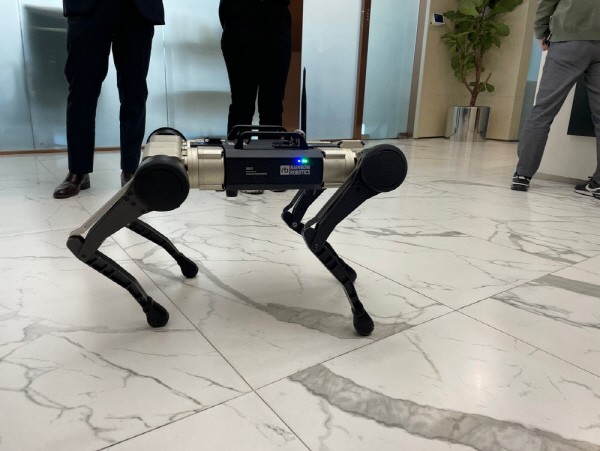Rainbow Robotics' collaborative robots will enter oversea market next year. They have secured price competitiveness by internalizing core parts. Rainbow Robotics will build a research and production facility in Sejong in preparation for the expansion of the robot market.
Jung-ho Lee, CEO of Rainbow Robotics, held a press conference in Gwanghwamun, Seoul on the 19th and announced their vision to become a comprehensive robot company. Rainbow Robotics was established in 2011 by a research team at the Humanoid Robot Research Center at KAIST, which developed the humanoid robot 'Hubo'. In 2020, they expanded their business into collaborative robot in earnest.

CEO Lee pointed out that the strength of the Rainbow Robotics collaborative robot is that they have developed their own major parts such as actuators, brakes, and controllers. CEO Lee explained, “Collaborative robot core parts are accounted for about 70% of the cost. By internalizing parts, we secured low cost compared to any other competitors.” They have also improved stability and precision by incorporating a self-collision detection function and inverse kinematics algorithm.
Rainbow Robotics will establish distribution networks in North America and Germany next year. Currently, Universal Robots from Denmark occupies about 60% of the global collaborative robot market. Rainbow Robotics will compete in the global market with technology and price competitiveness. CEO Lee said, “We were able to mass-produce collaborative robots in a relatively short time because we have the core technology. When we are able to secure supplier, profits can be maximized.”
Rainbow Robotics will expand the lineup of collaborative robots, which currently have three, to five within this year. By 2025, they will be subdivided into 9 models by usage, such as welding, painting, and food and beverage (F&B). They are continuously researching and developing (R&D) to secure technology for the collaborative robot reducer.

Rainbow Robotics plans to commercialize a quadrupedal robot by 2024. A quadrupedal robot, commonly called a 'robot dog', is characterized by its ability to continue walking without falling over even when impacted. CEO Lee said, “Once the business starts in earnest, it will be possible to carry out some of the activities that humans used to do, such as carrying out counter-terrorism missions and patrolling in factories by mounting cameras and weapons.”
Rainbow Robotics has internalized all the core technologies for quadrupedal robots. Currently, they are carrying out a national project for use in the military field. Research is also being conducted to advance the missions of quadrupedal robots, such as cognitive systems and autonomous driving.
Rainbow Robotics will launch an autonomous mobile robot (AMR) in the second half of next year. The SLAM technology, which generates a map of the surroundings while the mobile robot checks its location, will be used for AMR.
Rainbow Robotics has set the goal of becoming a comprehensive robot company by diversifying products such as micro collaborative robots, bipedal platforms, clamp robots for logistics, and precision-oriented mounts. In preparation for the increase in robot demand, they recently secured a site for a production facility in Sejong Techno Valley. When the expansion is completed, the production capacity is expected to increase from the current maximum of 2,000 units to 3,000 units by 2025.
CEO Lee said, “Unlike the past, society needs robots. In the era of unmanned automation, we will expand our business with domestic robot technology.”


By Staff Reporter Yoon-sub Song (sys@etnews.com)